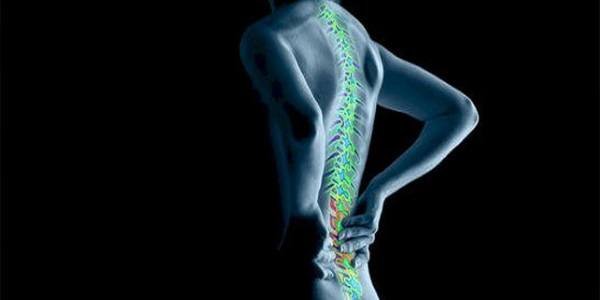Lordosis

Lordosis is a physiological or pathological curvature of the spine in an anterior-posterior direction with a convexity facing forward.
The normal physiological curvature of the spine is formed during the first year of life.
And the pathological can develop at any age as a result of congenital or acquired pathologies of the spine, hip joints, spinal muscles, buttocks and hips.
Accompanied by pain and impaired posture. In severe cases, it is possible to make it difficult for the internal organs to work.
Treatment is most often conservative. In severe pathology and/or progression of the pathological form, surgery may be necessary.
What are the symptoms?
The most common manifestations of pathological lordosis include:
• changes in the usual posture of the human body – usually when the normal curvature of one part of the spine is disturbed, more or less pronounced distortions occur in other parts of the spine as well;
• fatigue and pain in the affected area of the spine, which increases after exercise or during a longer stay in an uncomfortable position;
Limitations are observed when performing certain physical activities.
With a more pronounced lordosis, diseases of the heart, lungs, kidneys, stomach and intestines can develop, caused by disturbances in the normal relationship and by the contraction of the corresponding organs.
Depending on the nature of the pathological changes, several variants of postural disturbance can be observed, accompanied by an increase or decrease in lordosis.
The first variant is characterized by an increase in all curves, with lumbar lordosis and thoracic kyphosis being more pronounced.
And the second represents a round back or the usual posture of the body is kyphous, with a greatly increased thoracic kyphosis with a corresponding decrease in lumbar lordosis.
What are the causes?
The reason for the development of primary curvature of the spine can be processes such as malformations, tumors, inflammation in the area of the vertebrae, spondylolisthesis, muscle torsion and vertebral injuries.
The secondary form of distortion can occur as a result of:
• flexion contracture of the hip joint;
• ankylosis /immobility/ of the hip joint;
• pathological or congenital hip dislocation;
• systemic diseases of the musculoskeletal system;
• cerebral spastic paresis of the lower limbs;
• poliomyelitis affecting the pelvic muscles and lower limbs;
• Pregnancy;
In the latter case, the spinal curvature is temporary and disappears after the baby is born.
In all the above conditions, the center of gravity of the body shifts forward and to maintain balance, a person bends at the waist.
Predisposing factors that increase the likelihood of developing spinal curvature include:
• overweight, in which a large amount of fat is deposited in the abdominal area;
• incorrect body posture;
• a sharp increase in height during childhood or adolescence;
In children and adolescents, secondary compensatory hyperlordosis is usually mobile in nature and may diminish or disappear when its cause is removed.
Long-standing spinal curvature in adult patients remains permanent, even after removal of the provoking factors.
Treatment of lordosis
Treatment is usually done by an orthopedist and a vertebrologist. The main task of the therapy is the removal of the cause causing the pathological curvature of the spine.
In the course of treatment, he also performs kinesitherapeutic rehabilitation and orthopedic procedures. Therapeutic massages, manual therapy and physical therapy are prescribed to the patients.
Sometimes it is ostentatious to wear posture correctors – bandages and corsets.
In case of primary pathological curvature of the spine, surgical treatment is carried out, followed by rehabilitation.



